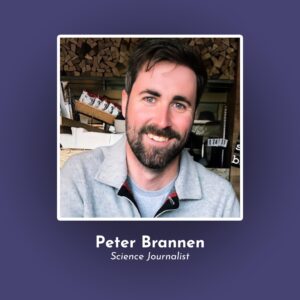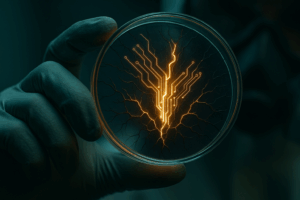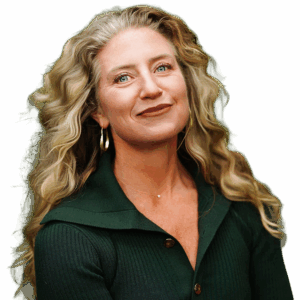
Show Summary
On this episode, Nate is joined by Peter Brannen, science journalist and author specializing in Earth’s prior mass extinctions, to unpack our planet’s geologic history and what it can tell us about our current climate situation. Humans have become very good at uncovering the history of our planetary home – revealing distinct periods during billions of years of deep time that have disturbing similarities to our own present time. How is the carbon cycle the foundation of our biosphere – and how have changes to it in the past impacted life’s ability to thrive? On the scales of geologic time, how do humans compare to the other species who have inhabited this planet – 99% of which have gone extinct – and will we end up being just a blip in the fossil record? How can an understanding of geologic and climate science prepare us for the environmental challenges we’ll face in the coming decades?
About Peter Brannen
Peter Brannen is an award-winning science journalist and contributing writer at The Atlantic. His work has also appeared in The New York Times, The Washington Post, Wired, Aeon, The Boston Globe, Slate and The Guardian among other publications. His 2017 book, The Ends of the World covers the five major mass extinctions in Earth’s history. Peter is currently a visiting scholar at the Kluge Center at the Library of Congress and an affiliate at the Institute of Arctic and Alpine Research at the University of Colorado-Boulder. He was formerly a 2018 Scripps Fellow at CU-Boulder, a 2015 journalist-in-residence at the National Evolutionary Synthesis Center at Duke University, and a 2011 Ocean Science Journalism Fellow at the Woods Hole Oceanographic Institution in Woods Hole, MA.
In French, we have a motto that says that a simple drawing is often better than a long explanation. Jean-Marc Jancovici Carbone 4 President
That’s very understandable because with left atmosphere thinking, one of the problems is that you see everything as a series of problems that must have solutions. Iain McGilchrist Neuroscientist and Philosopher
We can’t have hundreds and hundreds of real relationships that are healthy because that requires time and effort and full attention and awareness of being in real relationship and conversation with the other human. Nate Hagens Director of ISEOF
This is the crux of the whole problem. Individual parts of nature are more valuable than the biocomplexity of nature. Thomas Crowther Founder Restor
Show Notes & Links to Learn More
Download transcript00:00 – Peter Brannen Works + Info, The Ends of The World
02:28 – Big Five Mass Extinctions
05:50 – Deep Time, Reality Blind Chapter
07:10 – Humans have a difficult time conceptualizing really big numbers
08:01 – Cyanobacteria, stromatolites
08:28 – The Great Unconformity
08:52 – Fossil Raindrops
11:56 – Pangea
12:05 – Dinosaurs evolved 245 million years ago
12:19 – Cambrian Explosion
12:25 – Ordovician, Great Ordovician Biodiversification Event
13:21 – Enhanced Rock Weathering
15:24 – 99% of species ever to exist are extinct
16:58 – Late Davonian Mass extinction
17:55 – Trees in the Davonian
18:18 – Trees and nutrient release, effects on sea life
18:41 – Fossil fuel creation in anoxic Davonian seas
20:31 – End-Permian Mass Extinction
21:03 – Trilobites
21:09 – Permian Basin Petroleum Museum
21:52 – Fungal Spike
22:16 – Siberian Traps, Large Igneous Province
22:49 – Yellowstone Caldera
24:20 – RCP 8.5
25:10 – Carbon emitted during the Permian and the rate, compared to today
25:15 – Ocean Acidification
27:01 – Humans emit 100x more CO2 than all the volcanoes on Earth
27:18 – The carbon cycle is a large regulator for the climate and life
28:30 – Birds are dinosaurs and there are twice as many species of them as mammals
29:11 – Mass Radiations
30:15 – End-Triassic Mass Extinction, End Cretaceous Mass Extinctions
31:05 – Deccan Traps
31:34 – Peter Ward + TGS Episode
34:51 – Zircons, radioisotopes
35:30 – Lake Suigetsu
35:54 – Carbon Dating
37:50 – Minor mass extinctions
38:20 – Threshold to be a major mass extinction, 75% of species go extinct
39:04 – Threshold to make a species extinct
41:30 – Don’t Look Up
42:02 – Life on Our Planet
43:20 – Gaia vs Medea Hypotheses
45:05 – Hurricanes are heat dissipating structures for the ocean
46:50 – Heisenberg Principle
48:50 – Humans are only 300,000 years old as a species
50:02 – Interconnection of land and ocean systems
50:18 – Threats to ocean well-being
50:27 – Oceans have lost 2% of oxygen since 1960
51:21 – Plants have 30% fewer pores on their leaves since the industrial revolution because of increased CO2
52:06 – 56 million years ago warming event analyzed through ginkgo leaves in the fossil record
53:12 – CO2 helps plants grow, to a certain point
54:02 –A constraint on historic growth in global photosynthesis due to rising CO2
54:35 – Global warming makes the planet more unpredictable
54:49 – Corn expected to decline under future warming scenarios
55:25 – Plants will become less nutritious under climate change
56:16 – Sir David King, TGS Episode
56:33 – Jeremy Grantham, TGS Episode
56:45 – Half of people in the US don’t believe in Climate Change
58:34 – Woods Hole Oceanographic Institution
58:57 – Little Ice Age, Medieval Warm Period
1:01:10 – Eastern Seaboard Blackout sources from Ohio
1:03:42 – CO2 ppm over time
1:03:28 – Beginning of climate science
1:09:39 – Wet Bulb temperatures
1:10:57 – Horses during the warm period get smaller
1:11:21 – Fish are getting smaller
1:11:27 – Homo Floresiensis
1;12:15 – Acid Rain, Methylmercury
1:12:31 – Venusification
1:14:05 – Next supercontinent, Pangea Ultima
1:14:25 – Wilson Continental Cycle
1:14:31 – Rodinia
1:15:53 – Solar forcing and CO2 forcing
1:16:39 – Sun has gotten 10% brighter
1:18:18 – Triassic Newark Basin
1:24:15 – Tom Murphy + TGS Episode, Galactic Energy
1:27:27 – Link between energy and the economy
1:29:36 – Current climate events
1:30:13 – El Nino
1:30:35 – Opinion | I Study Climate Change. The Data Is Telling Us Something New.
1:30:59 – James Hansen Congress Testimony
1:40:23 – Parallel Universes
1:41:23 – Carl Sagan







